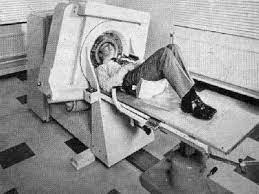Contrast nephropathy, also known as contrast-induced nephropathy (CIN) or contrast-induced acute kidney injury (CI-AKI), is a medical condition characterised by a rapid decline in kidney function that occurs shortly after the administration of a intravenous (IV) dye called ‘contrast media’.
This is used in x-ray procedures like a computed tomogram (CT) scan, or an angiogram – to make the images sharper and easier to interpret. This condition is more common in individuals with pre-existing CKD but can affect anyone.
The angiogram can be an examination of the arteries to any organ in the body, including those to the brain, heart, arm, leg or kidneys.

CT scan
Here are some key points about contrast nephropathy.
Causes
The primary cause of contrast nephropathy is the use of iodinated contrast media, which are substances injected into the bloodstream to enhance the visibility of blood vessels and organs in CT scans, angiograms and other x-rays. These contrast agents are ‘nephrotoxic’, meaning they have the potential to damage the kidneys.
How common is it?
Quite common. Contrast-induced nephropathy is the third leading cause of iatrogenic (investigation or treatment associated) acute kidney injury (AKI).
In fact 10-15% of patients with CKD3A-B, and 30% of those with CKD4, develop CIN after contrast media (as part of an x-ray technique that requires it).
Symptoms
Patients with contrast nephropathy may experience a rapid decline in kidney function, resulting in symptoms such as decreased urine output, swelling (oedema), increased serum creatinine levels, and in severe cases, acute kidney injury (AKI). Some individuals may also experience other symptoms related to the underlying medical condition that prompted the use of contrast media.
Risk Factors
Several factors increase the risk of developing contrast nephropathy, including:
- Pre-existing chromic kidney disease (CKD)
- Diabetes mellitus
- Dehydration
- Older age
- High doses of contrast media
- Multiple contrast-enhanced procedures in a short time frame.
Prevention
Preventive measures are essential to reduce the risk of contrast nephropathy. These may include:
- Ensuring proper hydration before and after the procedure
- Using the lowest possible dose of contrast media
- Choosing alternative imaging methods when possible, such as MRI or ultrasound, in high-risk individuals
- Monitoring kidney function in high-risk patients.
Treatment
If contrast nephropathy occurs, management involves supportive care and addressing the underlying cause. This may include:
- Ensuring adequate hydration
- Discontinuing any potentially nephrotoxic medication
- Monitoring kidney function closely
- In severe cases, dialysis may be necessary.
Prognosis (outlook)
In most cases, contrast nephropathy is reversible, and kidney function returns to baseline with appropriate management. However, in severe cases, it can lead to long-term kidney problems, so early detection and intervention are crucial.
It is important to note that contrast nephropathy is a potential complication, and not everyone who undergoes contrast-enhanced imaging will develop this condition. Doctors carefully assess the risks and benefits of using contrast media for each patient and take appropriate precautions to minimise the risk, especially in individuals with known risk factors.
Last Reviewed on 6 November 2023
